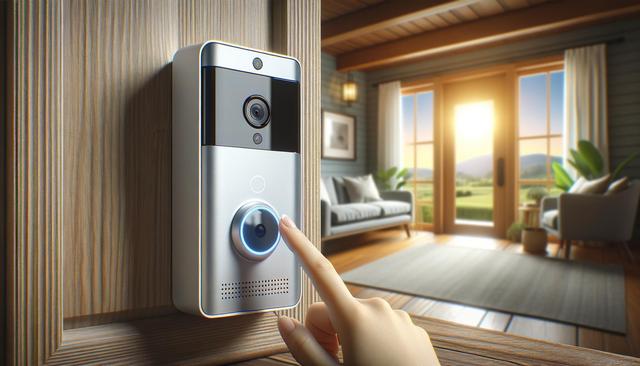What is a Smart Video Doorbell with Two-Way Communication?
A smart video doorbell is a modern home security device that combines the features of a traditional doorbell with a camera and audio system. It allows users to see and speak to visitors at their door through a connected smartphone, tablet, or smart display. Two-way communication is a key functionality that enables homeowners not just to monitor but to actively engage with anyone who approaches their doorstep. This can be especially useful for deterring suspicious activity, greeting guests, or managing package deliveries when not at home.
Unlike traditional intercom systems, smart video doorbells are typically connected to the internet, offering real-time alerts and remote access. They are often integrated with other smart home systems, allowing users to automate responses or record footage. Many models also include motion detection, night vision, and cloud storage options, enhancing their functionality beyond simple doorbell operation.
Key Features That Improve Home Security
Smart video doorbells come with a range of features designed to enhance home security. Two-way communication is perhaps the most interactive, allowing you to have a conversation with anyone at your door, whether you’re home or away. This feature can help in various scenarios including:
- Talking to delivery personnel when you’re not available
- Deterring potential intruders by making your presence known
- Screening visitors before opening the door
Additional security enhancements include high-definition video recording, wide-angle lenses for better visibility, night vision for low-light conditions, and motion-activated alerts. Some models allow you to set custom motion zones, ensuring that you’re only alerted to activity that matters most.
Integration with home automation systems can also increase the effectiveness of these doorbells. For instance, linking them with smart locks can allow you to remotely unlock your door for trusted visitors after verifying their identity.
Benefits of Remote Monitoring and Notifications
One of the major advantages of a smart video doorbell is the ability to monitor your front door from anywhere. As long as your mobile device is connected to the internet, you can receive instant notifications when someone rings the bell or triggers the motion sensors. This real-time information helps you stay aware of what’s happening at home, even when you’re far away.
Remote access offers peace of mind, especially for frequent travelers or working professionals. It allows users to:
- Check who is at the door before arriving home
- Manage deliveries and avoid package theft
- Keep tabs on unexpected visitors or suspicious activity
Many smart video doorbells also support cloud storage, enabling you to review past footage. This can be useful for providing evidence in case of a security incident or simply keeping a log of daily activity around your home.
Installation and Compatibility Considerations
Installing a smart video doorbell is generally straightforward, although it does require some basic tools and technical know-how. Most products are designed to replace existing wired doorbells, which means they can use the existing wiring for power. However, there are also battery-powered options that offer more flexibility in placement.
Before purchasing a device, it’s important to ensure compatibility with your current home setup. Consider these factors:
- Is your home Wi-Fi strong and stable near the doorbell installation point?
- Do you use a smart home ecosystem (such as voice assistants or smart displays) that the doorbell should integrate with?
- Is cloud storage or local storage more suitable for your needs and preferences?
Some models also offer optional accessories, such as chime extenders or mounting kits, which can enhance usability and performance. Reading product specifications and user reviews can help you find an option that aligns well with your home environment.
Privacy and Data Security Aspects
While smart video doorbells offer significant benefits in terms of convenience and security, they also raise important questions about privacy and data security. As these devices often store video footage and transmit audio over the internet, it’s essential to choose products that offer robust encryption and data protection policies.
Steps that can help maintain your privacy include:
- Using strong, unique passwords for device accounts
- Enabling two-factor authentication
- Regularly updating firmware to patch security vulnerabilities
- Reviewing the manufacturer’s data storage and sharing policies
Some users may have concerns about surveillance or neighbors feeling uncomfortable being recorded. To address this, many devices offer customizable settings that allow you to limit the range of video capture or disable audio recording. Being transparent with neighbors and using privacy-friendly settings can help balance security with community trust.






